Aachen, Germany is famous for three things: Charlemagne, a 1,200-year-old cathedral, and gingerbread. It is also home to one of the most charming Christmas markets in Germany. Dozens of stalls surround the cathedral and town hall, once part of Charlemagne’s royal palace. Twinkling lights and the aroma of warm spices create an irresistibly festive atmosphere in this historic city. If you’re visiting western Germany during the holiday season, the Aachen Christmas Market is worth a stop.
Aachener Printen is the local gingerbread that you’ll find in market stalls and shops all over town. The soft and chewy cookies are flavored with a unique blend of spices and herbs, and sweetened with sugar beet syrup. I’m especially fond of the ones dipped in dark chocolate.
Historically, the dough was rolled onto molds that printed the images of saints and other figures onto the cookies, hence the name. Printen are a symbol of the city, and giant inflatable ones stand proudly around the market.
There are lots of savory food options at the Aachen Christmas Market, including bratwurst and currywurst. I opted for a heaping plate of reibekuchen, or potato pancakes with applesauce, and it was one of the best versions I’ve ever had at a German market.
Warm beverages like cocoa and mulled wine (glühwein) come in ceramic mugs. You’ll pay a deposit for the mug which you’ll get back if you return the it to the stall. Or, you can keep it as a souvenir. (Pro tip: the stall will exchange your used mug for a clean one at no charge.)
Aachen Cathedral
Charlemagne was a medieval warrior king who unified much of Europe and reached near-mythical status. In 800, he became the first Holy Roman Emperor and ruled until his death in 814. His golden sarcophagus resides in the choir of Aachen Cathedral, surrounded by royal blue stained-glass windows.
The oldest part of the cathedral dates to the 790s and served as Charlemagne’s private chapel. Beautiful Byzantine-inspired mosaics cover the dome and ceilings, and striped Italian marble arches support the walls. The marble columns are said to come from ancient Greece.
In an upper gallery you’ll find Charlemagne’s marble throne which was used for the coronation of every Holy Roman emperor until 1531. Access to this part of the cathedral, as well as to the choir with Charlemagne’s tomb, is only possible on a guided tour. Tickets can be purchased the same day at the visitor information center. I recommend doing this as soon as you arrive in Aachen so you don’t miss out. Check the cathedral website for current tour times.
I signed up for a German tour because that was the only one offered on the day of my visit. I don’t speak German. Turns out, none of the other attendees did, either! (They were Dutch, Belgian, and French.) So the guide led us in English and we all had a good laugh.
Aachen Cathedral Treasury
You’ll need a separate ticket for the Cathedral Treasury, but it’s worth it. The collection of over 130 pieces is one of the most important of its kind in Northern Europe. The star is the Bust of Charlemagne, a bejeweled silver-and-gold reliquary holding part of the emperor’s skull. A separate reliquary displays his right forearm.
Another notable artwork is the Cross of Lothar, which gets its name from the large rock crystal cameo of the ruler Lothar II. The jeweled cross is considered a masterpiece of medieval goldwork. Together, the Aachen Cathedral and Treasury make up Germany’s very first UNESCO World Heritage Site, added to the list in 1978.
Aachen Town Hall
Another interesting attraction is Aachen Town Hall. It dates to the 1300s and replaced the crumbling Palace of Aachen which Charlemagne called home. Inside, the walls of the coronation hall are covered in murals depicting Charlemagne’s legendary exploits. You can also see replicas of the crown jewels of the Holy Roman Empire. (The originals are in Vienna.)
I visited Aachen as a day trip from Dusseldorf, and the train ride was about an hour and thirty minutes each way. If you’re visiting from Cologne, the journey is under an hour on the ICE train. Round-trip tickets can be purchased at the station on the same day as travel.
The Aachen Christmas Market is open daily from late November through late December. Opening hours are usually 11am – 9pm, with some exceptions. For exact dates and times, click here.
Are you ready to visit Aachen Christmas Market?
Save this guide for easy reference!
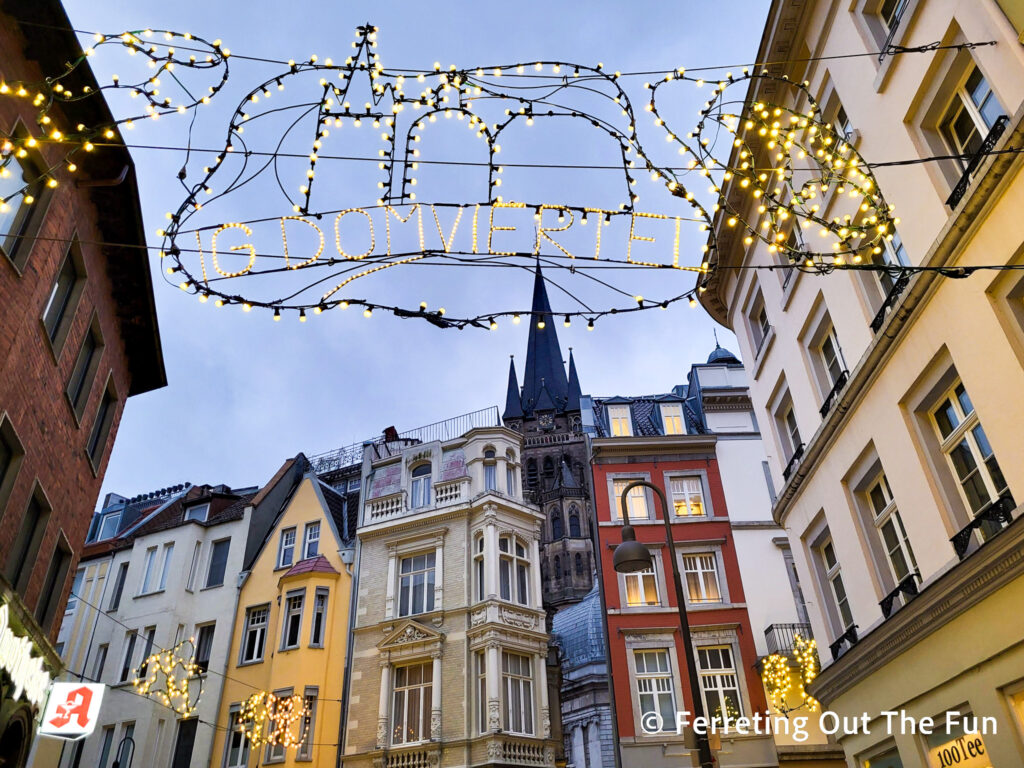
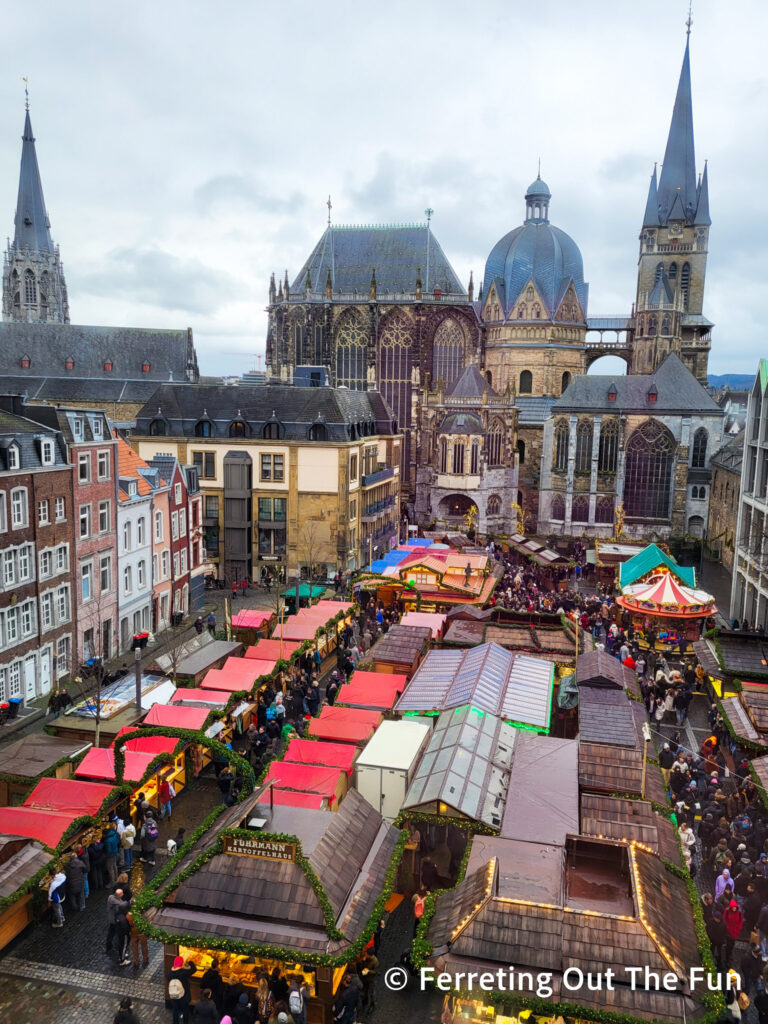
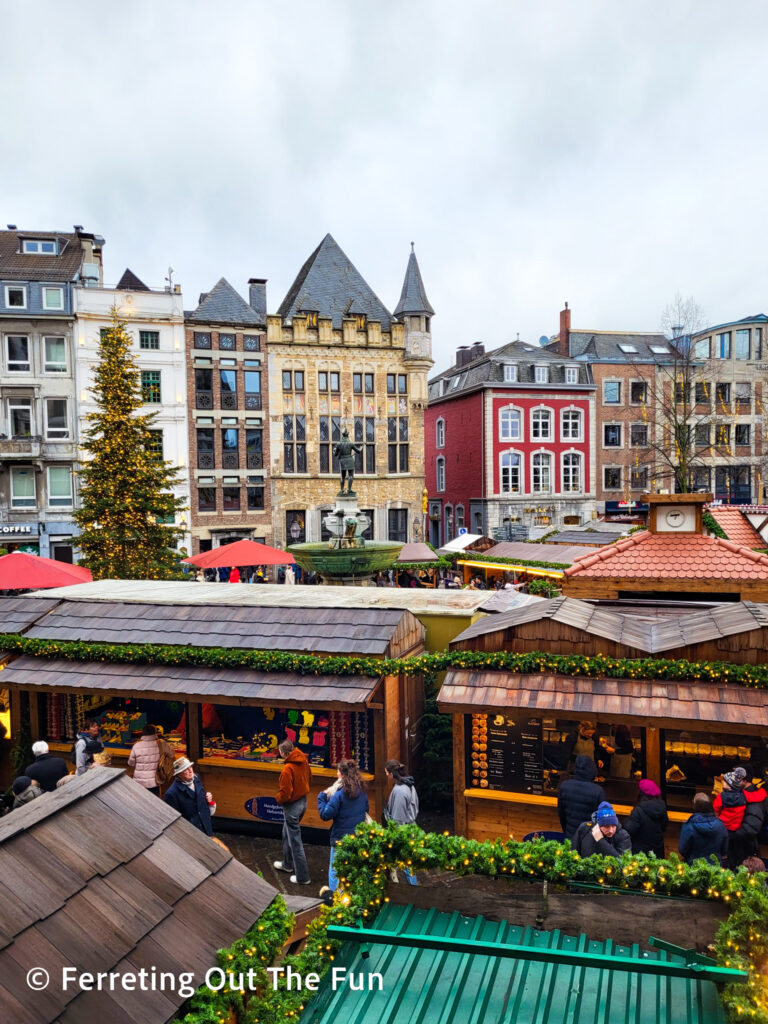
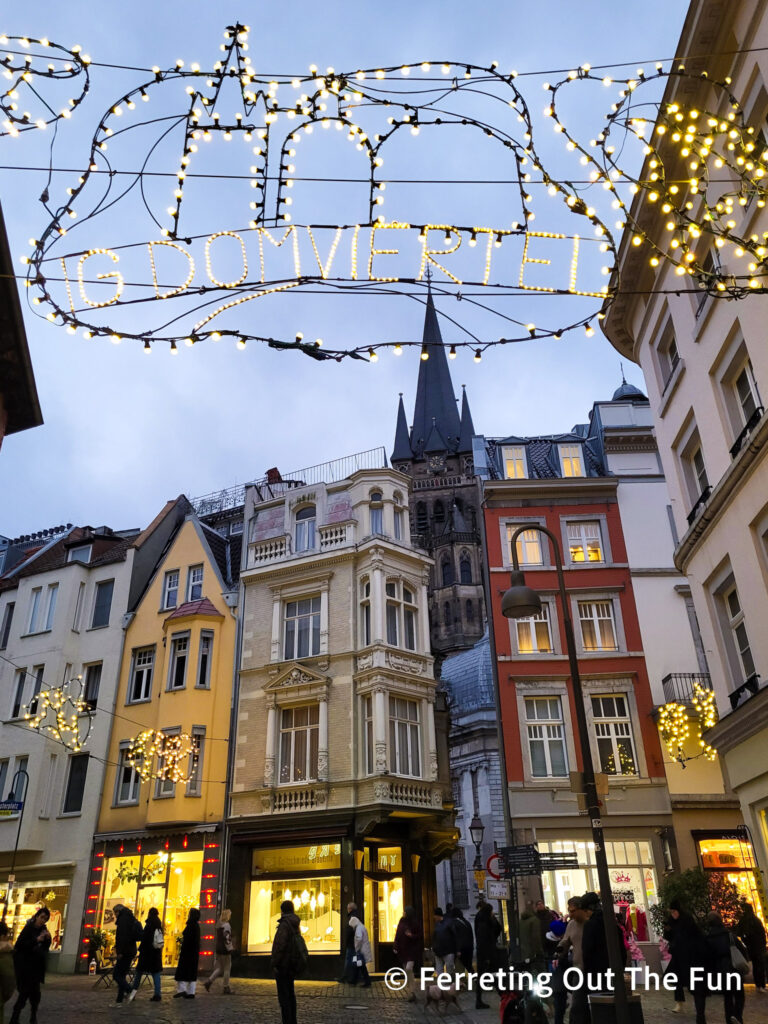
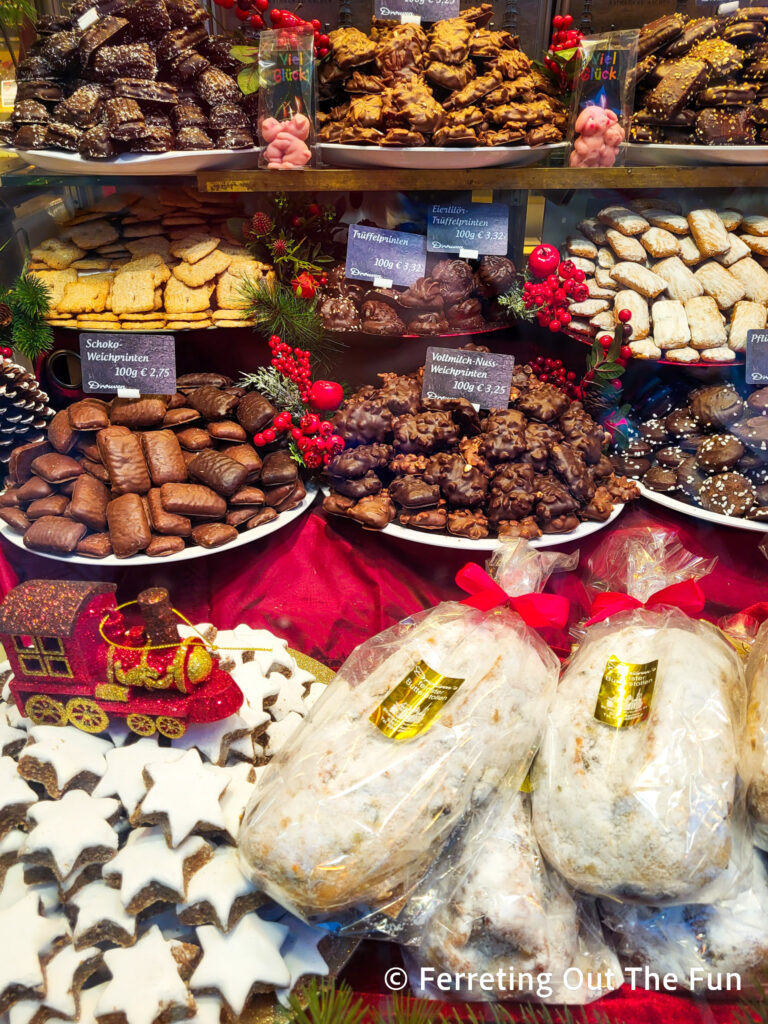
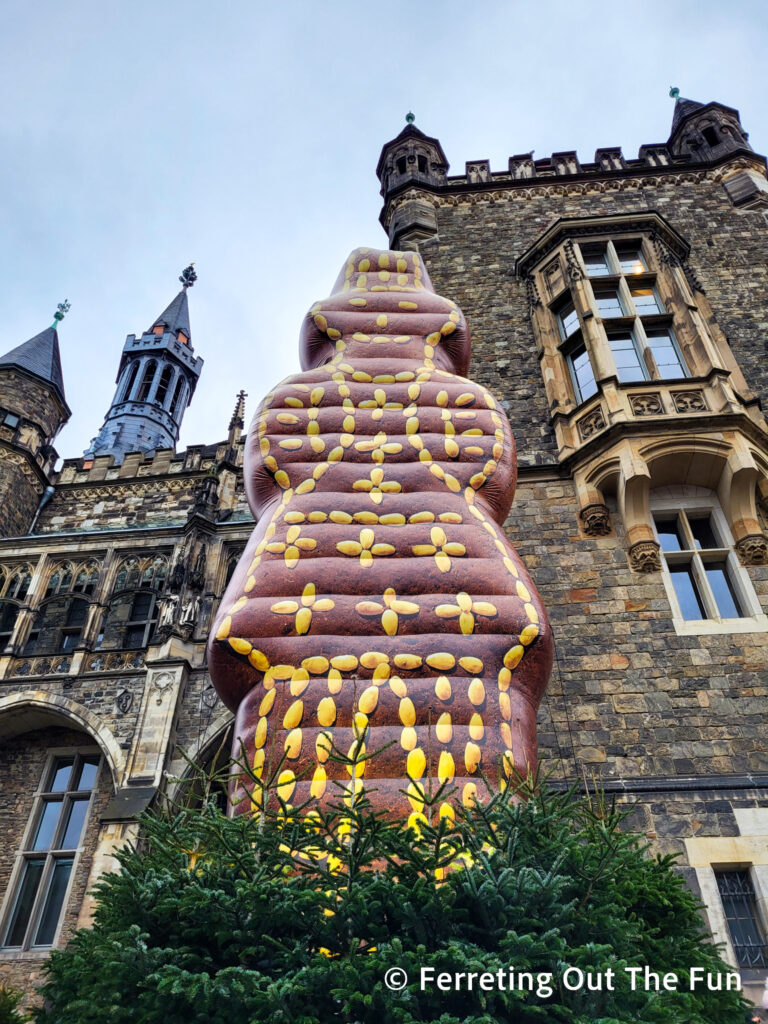
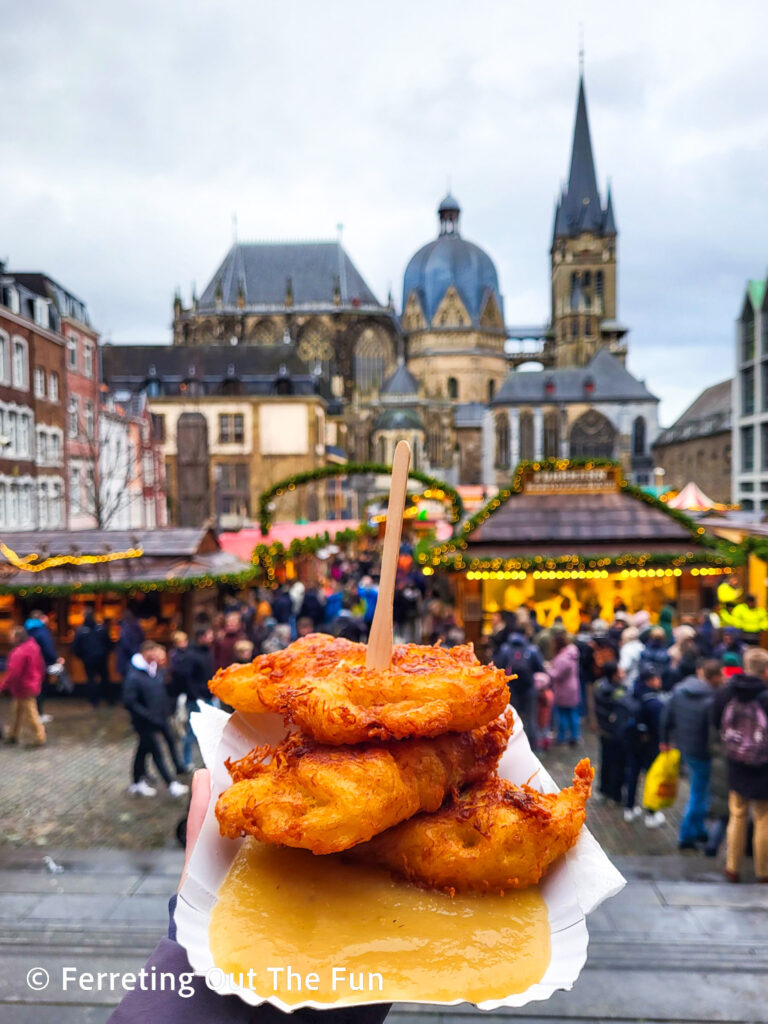
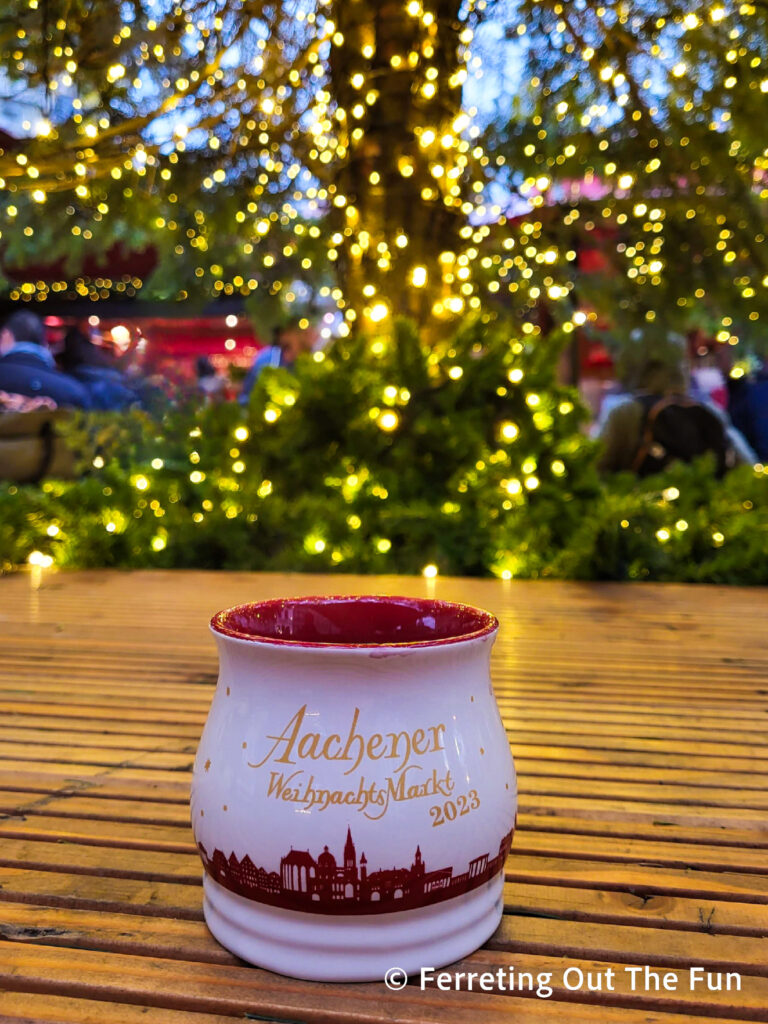

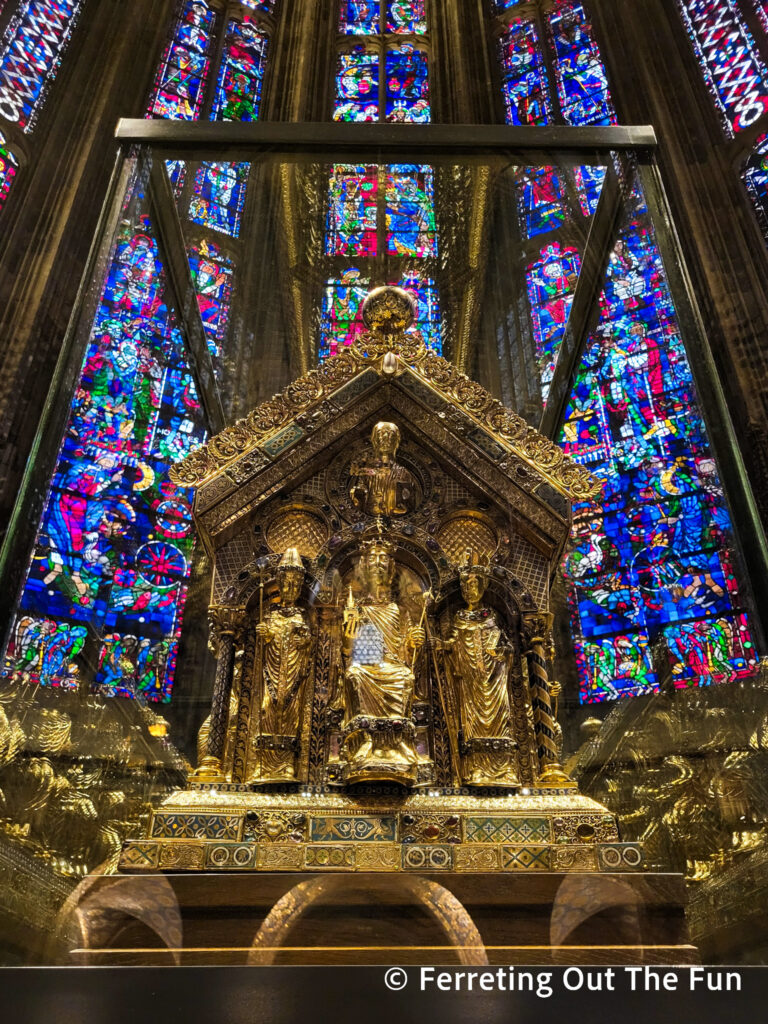
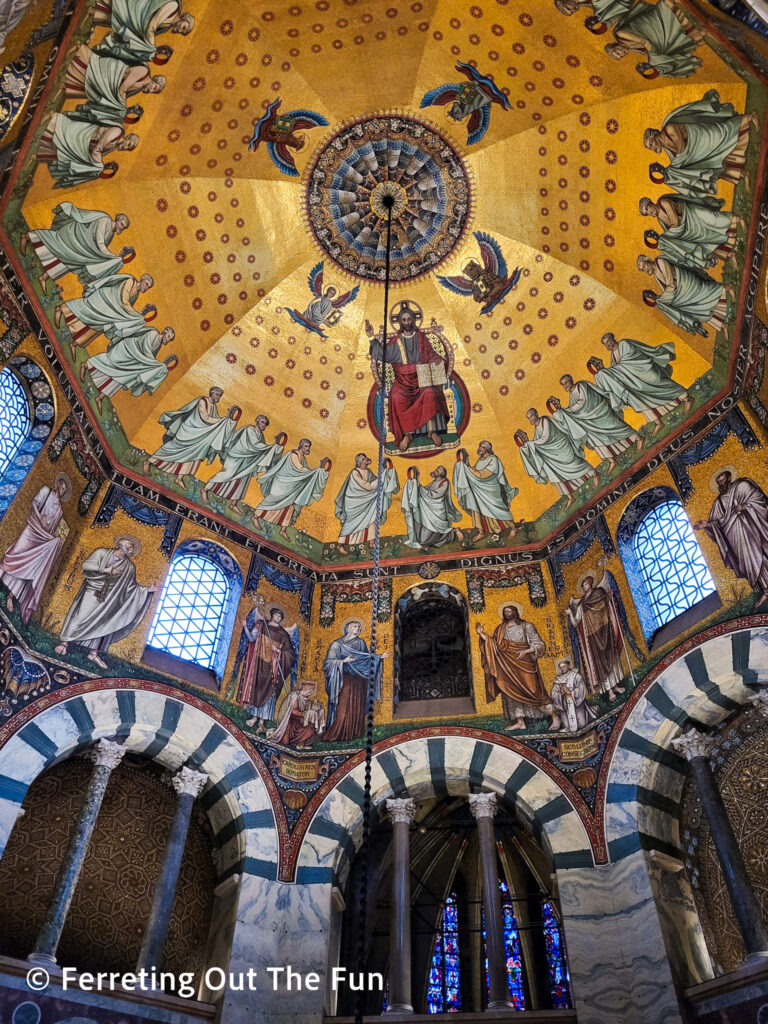
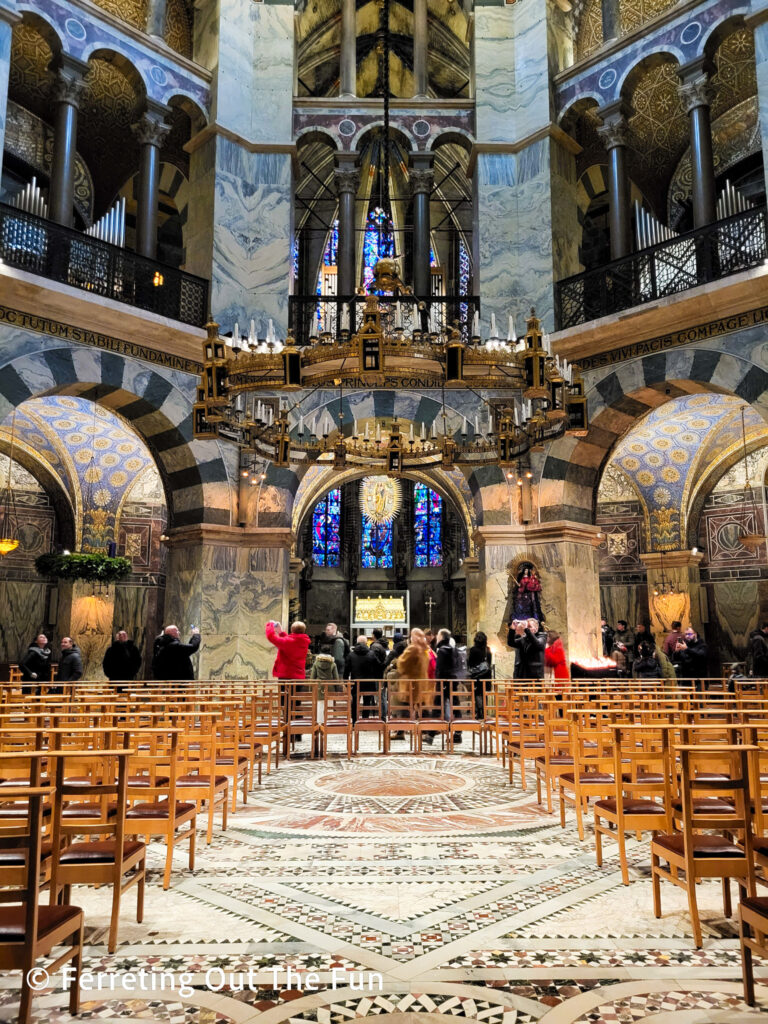
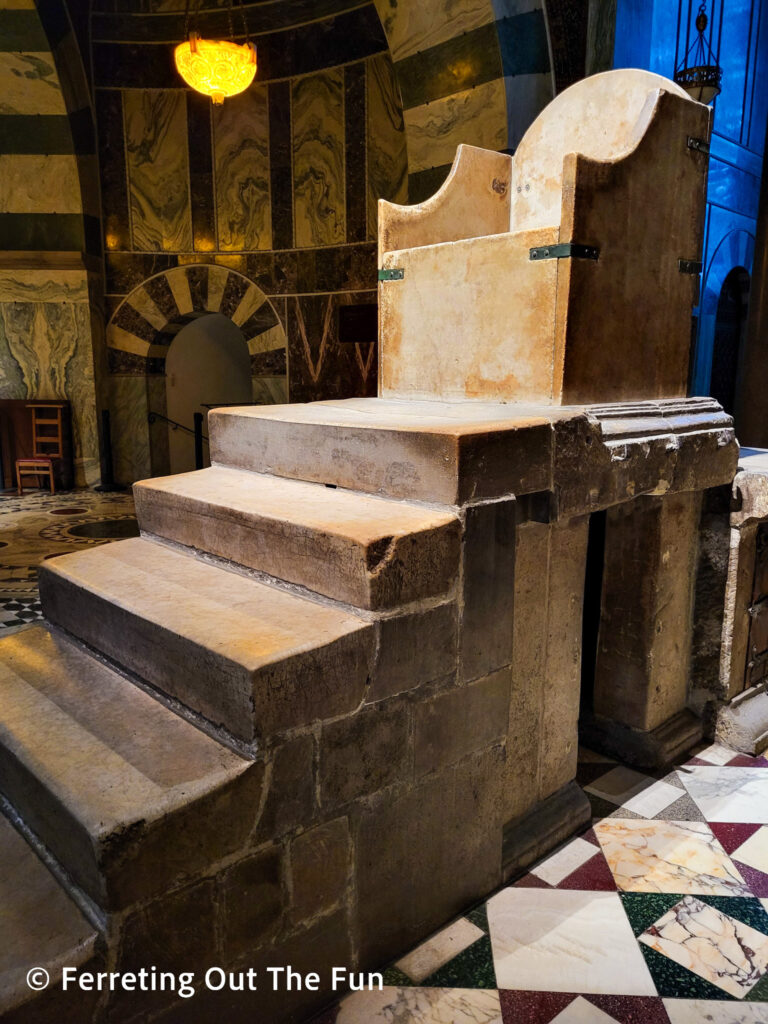
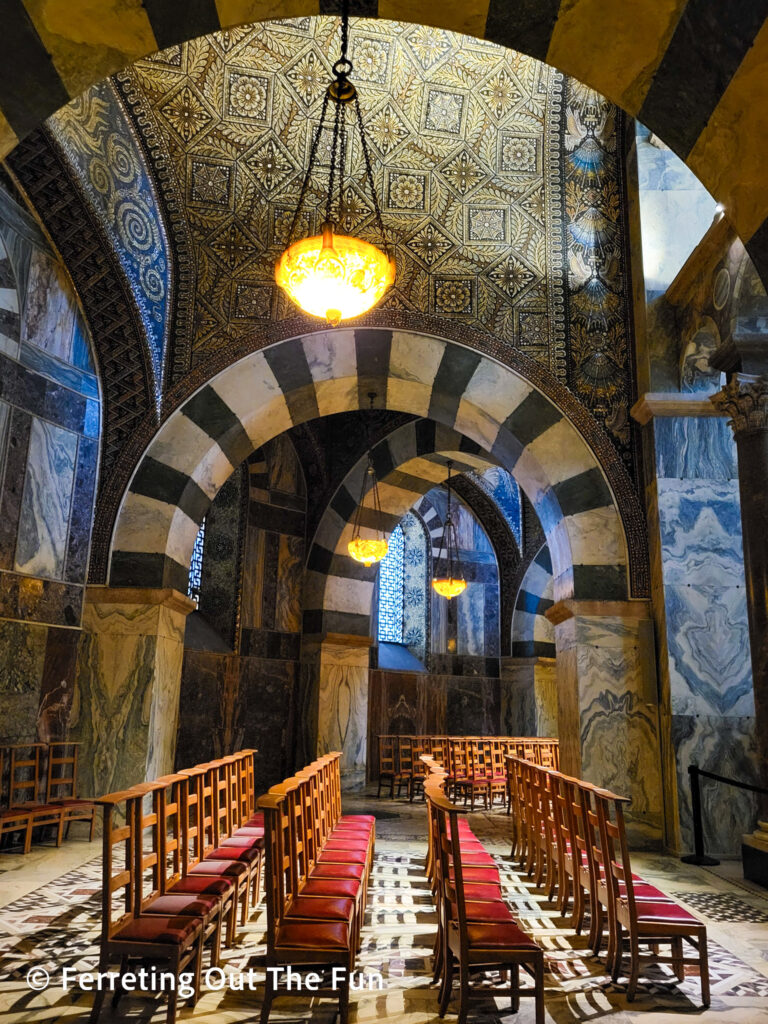
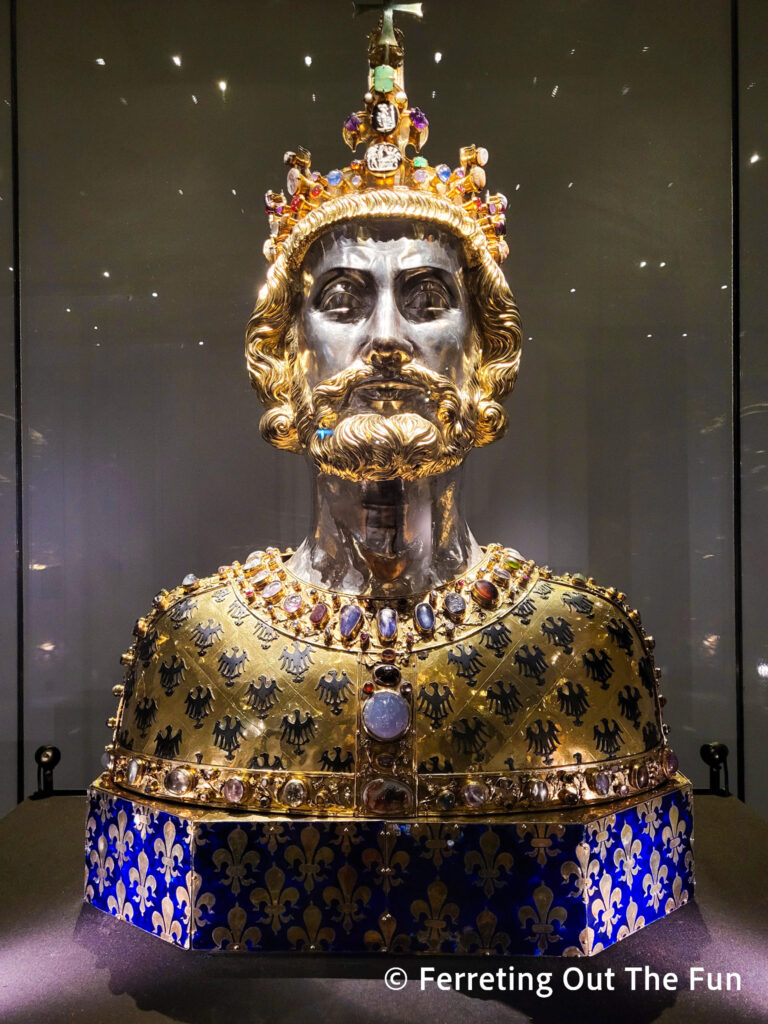
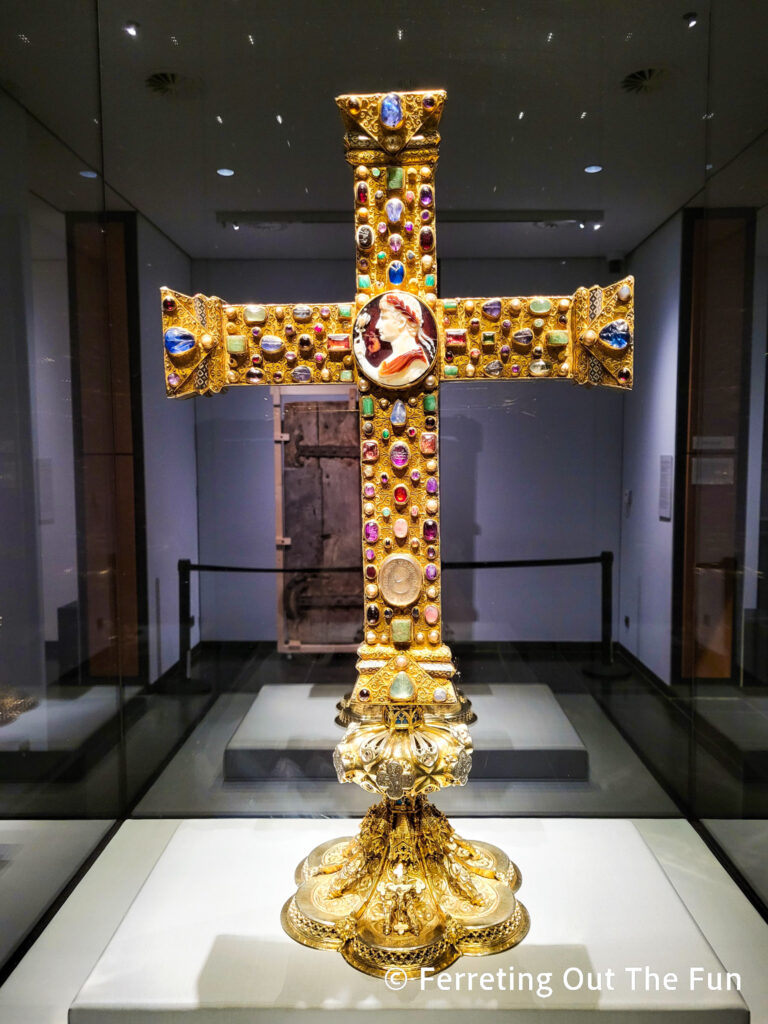
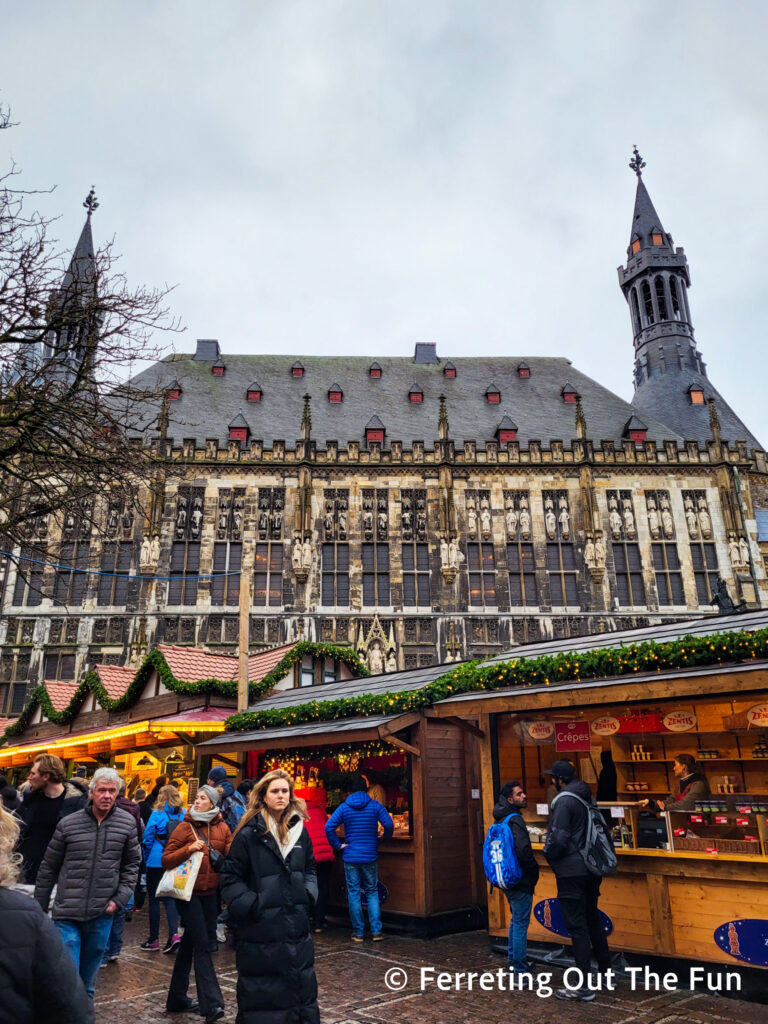
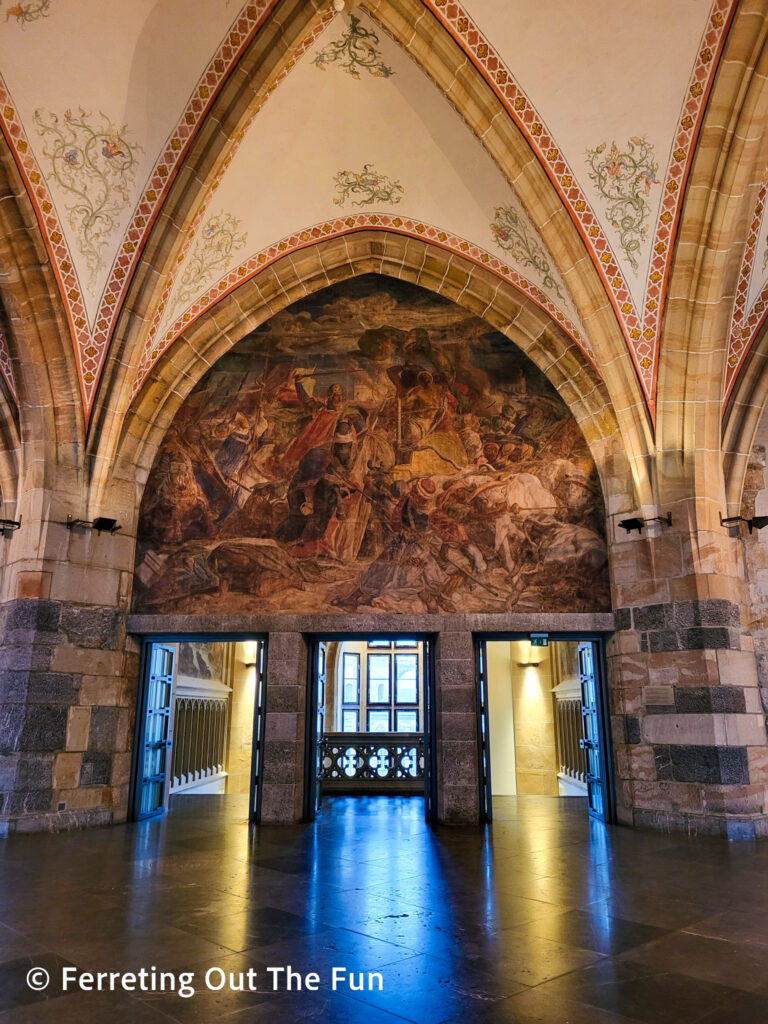
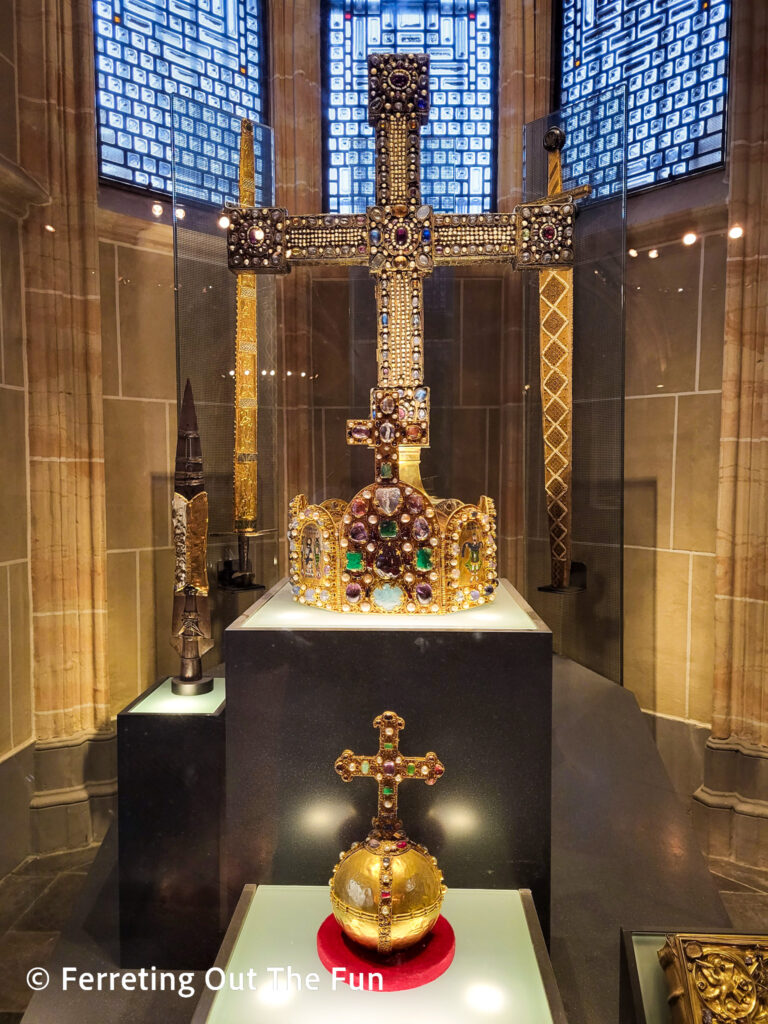
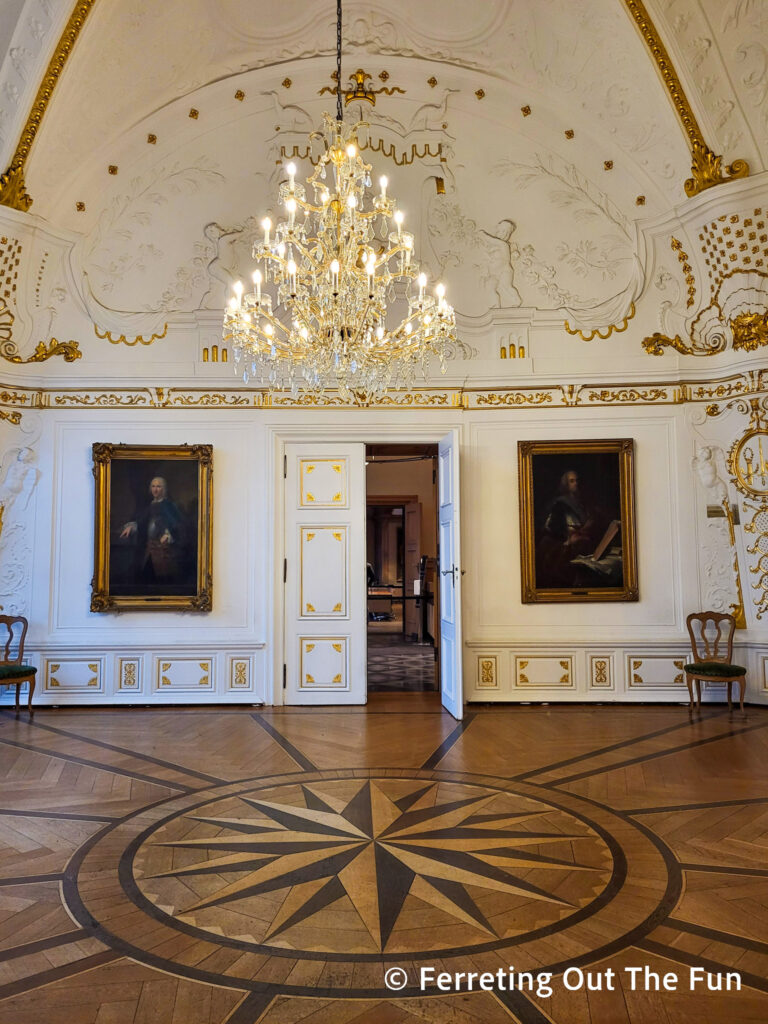
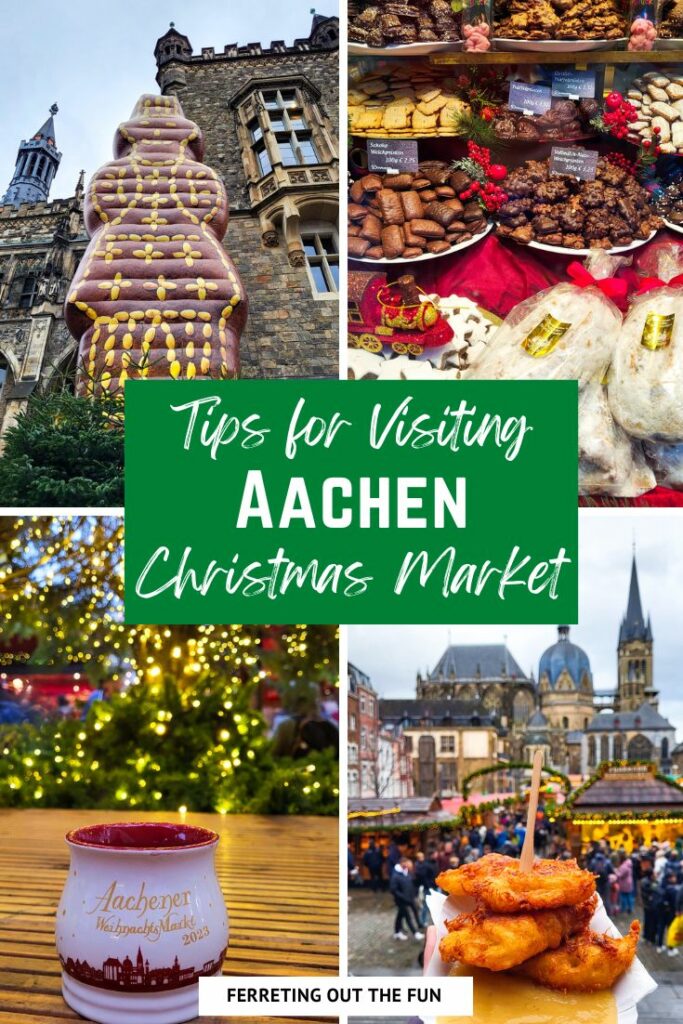
Thank you so much for this great post! It was really helpful in planning my Aachen visit!